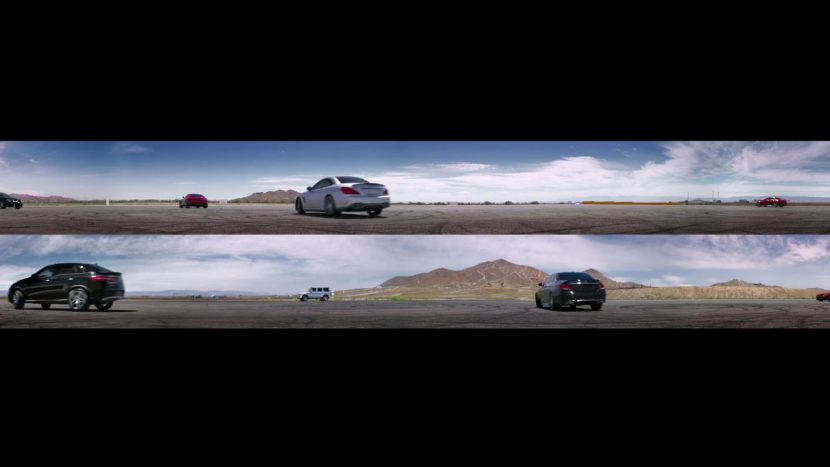The new Mercedes-Benz Stadium in Atlanta houses one of the largest LED screen in the World. It is 60 stories high and continuously wraps around the top of the massive football stadium. Even in the days of high resolution cinematography, filming a spot which is 20K is exceptional. To make matters even more complex, the project was a 360 experience that would need to be experienced from well beneath the screens by a giant crowd.
In total, there will be four 360 live-action videos showcasing the new 2018 Mercedes-Benz cars.
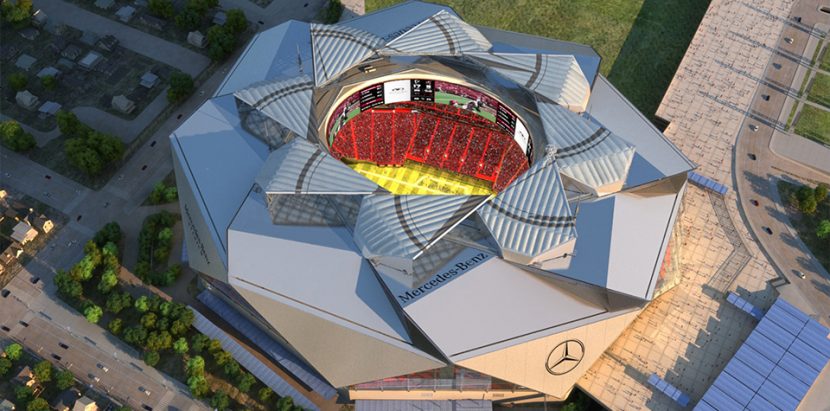
Conceptually, practically and from a workflow point of view, the Halo Screen Mercedes-Benz Stadium spots produced by The-Artery in New York were never going to be easy, but the results are a stunning multi-dimensional clean visual solution delivered by director Vico Sharabani.
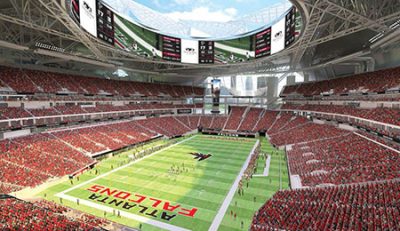 Sharabani conceived of the solution to the piece and solved the complex production issues for the Atlanta Falcons Stadium’s new 63,800-square-foot halo board. In the end, the final delivered master was a 20K x 1080 clip which would be seen on 11 HD screens, seamlessly encircling the crowd at the Stadium.
Sharabani conceived of the solution to the piece and solved the complex production issues for the Atlanta Falcons Stadium’s new 63,800-square-foot halo board. In the end, the final delivered master was a 20K x 1080 clip which would be seen on 11 HD screens, seamlessly encircling the crowd at the Stadium.
The piece was shot on a set of Red Cameras, each a HELIUM Weapon @ 8K but cropped in virtually and with overlap left and right for the seamless stitching. Derin Turner from VR Playhouse suggested using 14mm S4/i T2.0 Cooke lenses, “as we needed to use the best lenses we could,” he explains. Lens imperfections can be the weak link in any stitching and the Cooke lenses free from optical problems, such as optical errors or chromatic aberration, worked extremely well.
The team had six cameras with a seventh as a spare. Building the rig with the actual cameras and lens took a couple of days, with production services and camera help by The Astronauts Guild, under the eye and skill of DOP Evan Pesses and Creative Technologist Scott Connolly. “If you do the maths, that is over half a million dollars of just cameras and lenses alone,” explains Sharabani.
The Red Helium large sensor not only provides high resolution, but the optical characteristics of large formats such as Vista-vision. The result is not only high resolution footage but high quality, high dynamic range, large format perspective and rich imagery that makes the cars look great.
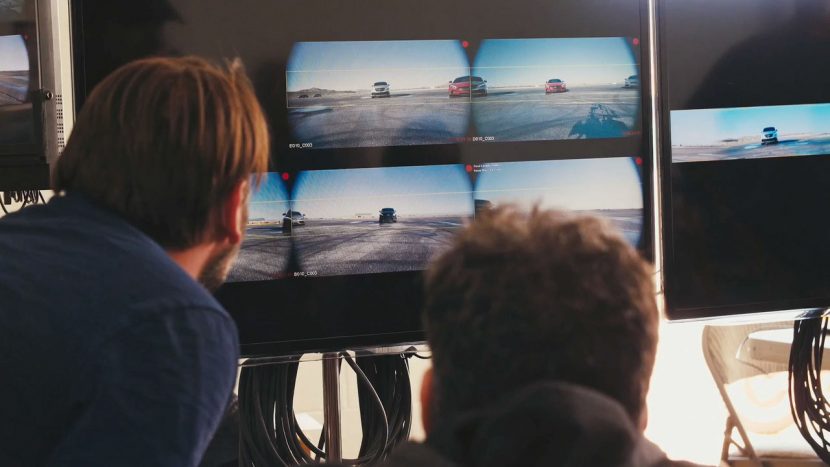
Review on set was naturally quite complex. VR was only a review tool in an experimental type of concept. The team had an Oculus VR headset on set to preview the material, along with multiple screens. In addition the team had a 65″ screen with a rough live stitch to preview.
While the final piece would be viewed from below in the Stadium, Sharabani’s instinct was to not have any distortion in the actual footage. “My wish was to eliminate any distortion and not add anything on top” commented the director.
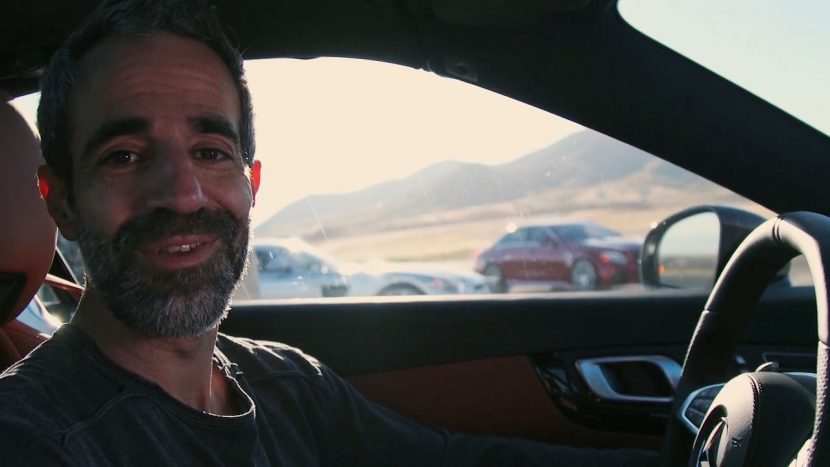
The film was commissioned in April and was being shot by May, on location at Willow Springs raceway outside LA. Willow Springs International Motorsports Park is located near Rosamond and Lancaster, in California. Due to the script, the NY based Director shot “about an hour north of Los Angeles,” Sharabani explains.
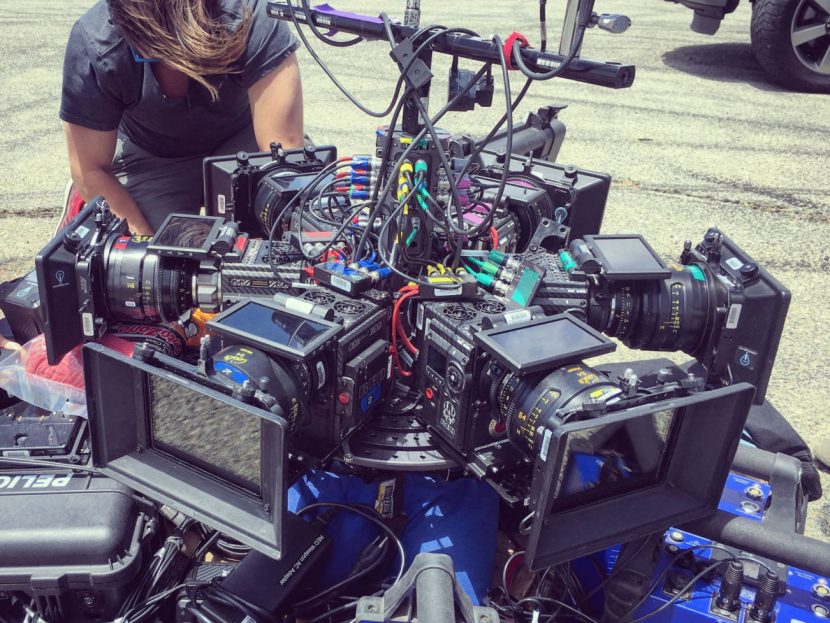
One key factor in the project was the dynamic range delivered in the Red footage “which really helped as we had black, red and silver cars, all against a bright sky,” he adds. Judging the footage on location was difficult due to the harsh conditions, so “we had to believe it would look great, once we did the final post,” Sharabani recalls. The footage is remarkable as it is not heavily treated and reconstructed, in the way many car spots are. The team added some gradient to keep the crisp highlights, and made sure the car badges read clearly, but most of the complexity was in both the shoot and the sheer complexity of a 20x1k pipeline.
The final stitching of the complex footage was done by VR Playhouse.
The final images were finished in Autodesk Flame, with Lead Flame Artist, Asaf Yeger. Sharabani himself has a long history with Flame and is well known for his creative problem solving with Flame over many years. The grade was by Steve Picano. The final images are both stunning and look effortlessly simple, clean and powerful.
Client: Mercedes-Benz
Senior Campaign Specialist: Gloria Libby
Agency: Merkley + Partners
CCD/Partner: Andrew Hirsch
Head Of Production: Gary Grossman
Producer: Scott Mushinskie
Group Creative Director: Max Godsil
Associate Creative Director: Brian Hall
Chief Client Officer: Cynthia Davis
Group Account Director: Beth Liss
Account Director: Jordan Sabourin
Account Executive: Amanda Ribeiro
Production Company: The-Artery
Director: Vico Sharabani
EP: Deborah Sullivan
Head of Production: Lynzi Grant
Producer: Emily Brown
Production Services: The Astronauts Guild
DOP: Evan Pesses
Creative Technologist: Scott Connolly
VR supervisor: Ian Spohr
360 Stitching: VR PlayhouseVR
Supervisor: Derin Turner
EP: Leo Vezzali

